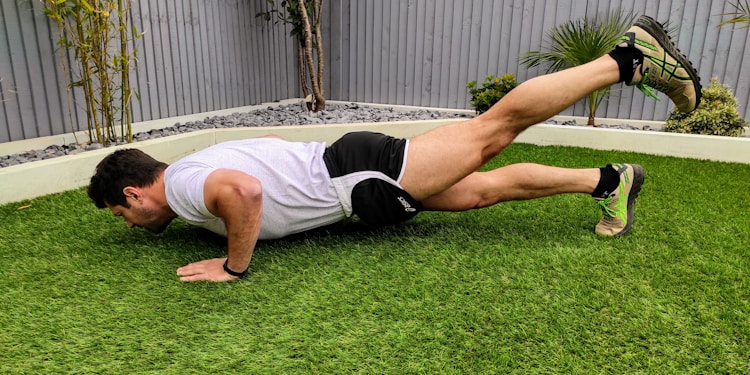Muscle damage is quite natural and can occur due to excessive exercising, jogging, or even walking. So, how to make muscle recovery faster?
Well, there are many ways you can recover quickly from your muscle injury. Suppose, if you have mild muscle discomfort or an accident, your doctor may suggest you use light therapy to speed up your recovery. Moreover, regular massage and certain medications can also relieve your muscle pain.
So, in this article, we have shortlisted all the ways by which you can make muscle recovery faster.
How to Make Muscle Recovery Faster?
Most gymnasts and fitness freaks frequently complain about muscular discomfort after workout sessions. However, here in this section, we’ll let you know all the ways by which you can make muscle recovery faster and more effectively.
Keep Yourself Hydrated
Water is essential for post-workout recovery, even for muscle rebuilding. Moreover, rehydration and electrolytes recovery after exercise is essential for you to take in.
Magnesium, calcium, sodium, and potassium are electrolytes found in most diets. These minerals are required for nerve function and are depleted during muscular contraction.
Furthermore, healthy eating habits and plenty of fruits and vegetables can provide enough electrolytes for muscle rehabilitation.
After exercise sessions, coconut water, a glass of milk, or a fruit smoothie can help replenish electrolytes and speed muscle recovery. If you’re on a low-sodium diet, you can add salt to your lemon water
Exercise Snack
After a workout session, a carbohydrate-protein snack can help speed up your muscle recovery by supplying the essential nutrients needed to repair your muscle tissue.
So, you can make a coffee smoothie ahead of time, or eat fruit with yogurt to refuel yourself after a morning workout.
Almonds, chickpeas, tofu, and other high-protein foods can aid you to rebuild muscles on a plant-based diet. Moreover, a high-protein snack at night can help muscles to heal.
Light Therapy
Light therapy lamps and other modern light therapy technology can help to recover your muscle injury. Red light powers your cells’ mitochondria, generating energy for your cells. This can speed up your muscle repair and give you pain relief. Also, it is a great method to recover muscle after running.
The red light treatment causes a chemical reaction in the mitochondria. This aids in cell growth and energy production.
Moreover, red light therapy helps mitochondria produce ATP that aids in the rehabilitation of muscular injuries and discomfort.
Red light therapy may be hot and bright, but it doesn’t burn your skin, and it also doesn’t contain any UV rays. Light therapy treatment stimulates new skin cells, identifying the primary cause of your muscle pain issue.
However, we always advise you to visit your doctor before undergoing these procedures.
Medications
Muscle strains are uncomfortable and might make it challenging for you to carry out regular tasks. NSAIDs or aspirin can also help you to reduce swelling and pain. However, for severe muscular injuries, your physician may prescribe a stronger pain treatment.
Even if doctor-prescribed pain killers work, you should take a break from any intense physical activities. For example, if you sprain your ankles, you should avoid sports or exercise for at least a few weeks, even if you are fine and healthy.
Warm-up Before Exercise
Researches state that a good warm-up can help to reduce muscular discomfort and injury risk. Proper warmup can help you a lot to ease your muscles before aerobics and intense exercises like pull-ups, deadlifts, and single-arm rows
So, warm-ups before exercises will gradually extend and engage the muscles, helping to minimize overstretching, strain, or injury throughout your workout.
Take Rest
After your workout, experts say to take rest and cool down to allow progressive recovery of pre-exercise heart rate and blood pressure. Around 5 to 10 minutes of slow jogging or walking on the treadmill might help your body cool down after an intense workout session.
Static stretching (holding a stretch position) can help enhance the range of motion once your pulse rate has dropped. Stretching before bed may also help you sleep better and even stay healthy.
Stretching Foam
According to research, it was found that using foam rolling before a workout session can assist in improving your performance and posture. Moreover, warming up with dynamic stretches can help you prepare the muscles for your workout.
Stretching and activating glutes before and after a leg workout can increase flexibility and maximize training. Furthermore, stretching stiff hips on your rest days can help relieve pain, contribute to muscle repair, and increase flexibility.
Bottom Line
Standing, sitting, walking, or even jogging with your legs down is a pretty effective method to make your muscle recovery faster. This prevents blood pooling in the lower legs and promotes blood flow to the rest of your body, decreasing muscle swelling. Yoga positions can also promote blood circulation and relaxation. You can also consider using light therapy as consistent use can help your muscle recover faster.
















